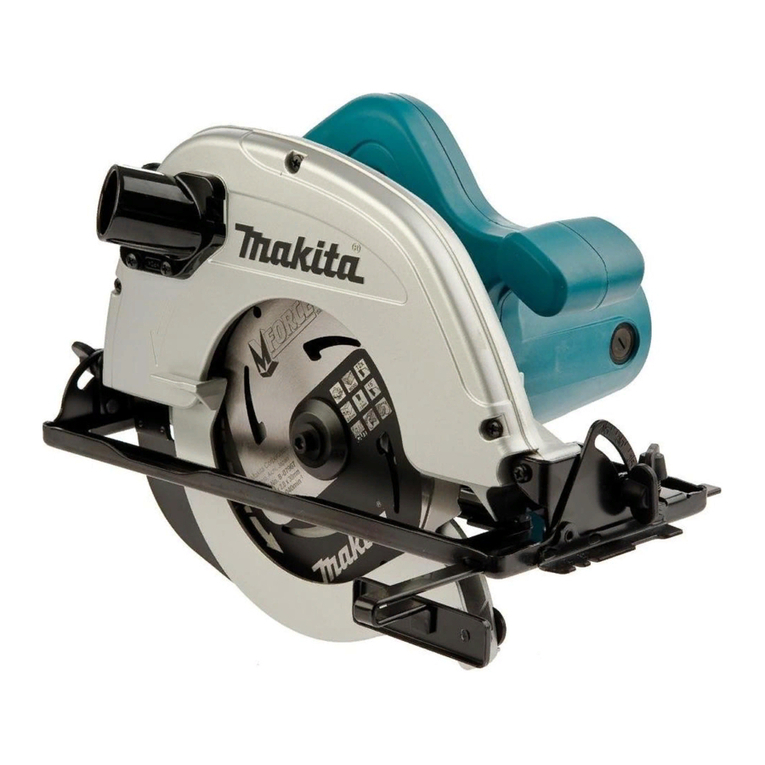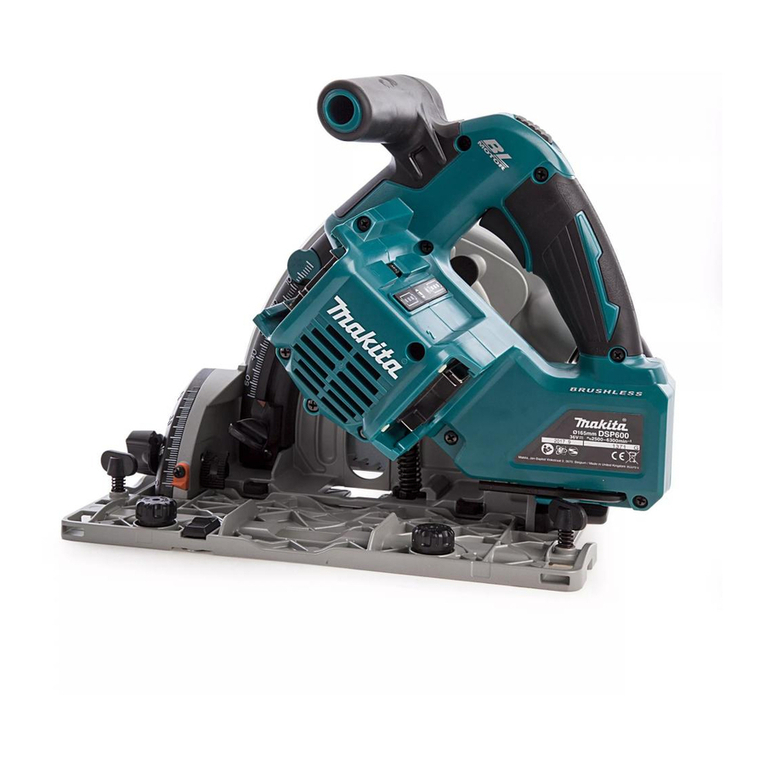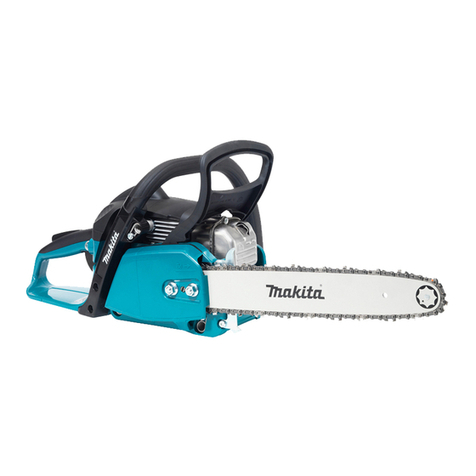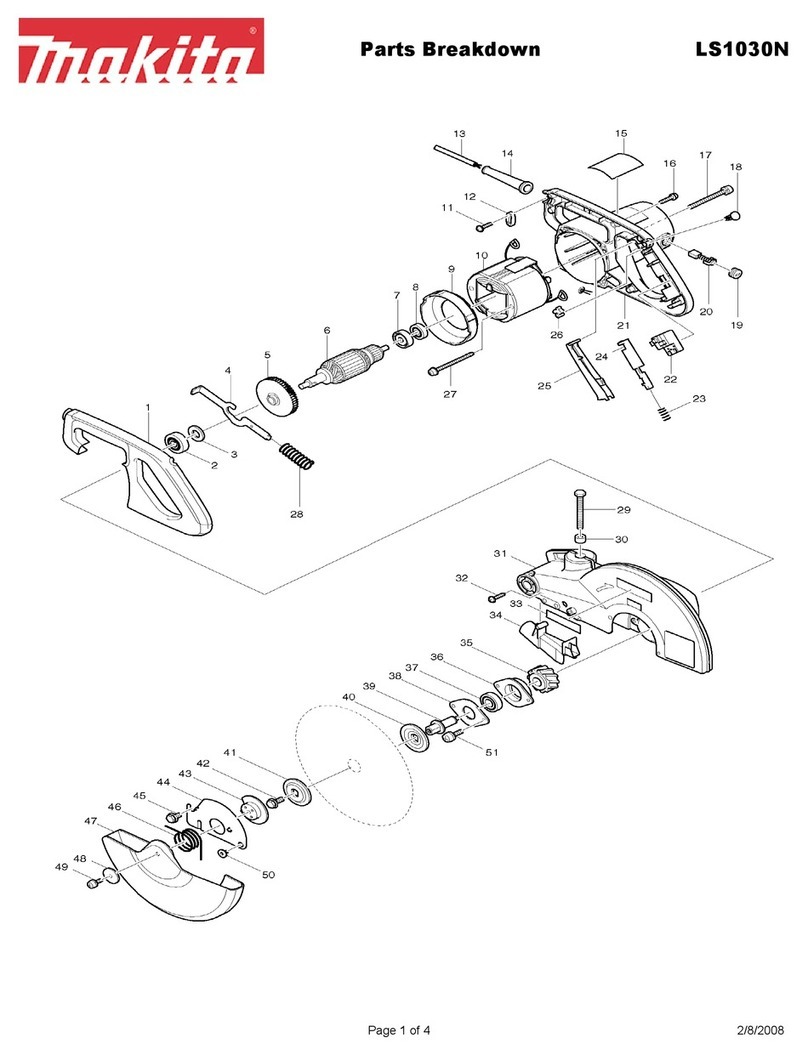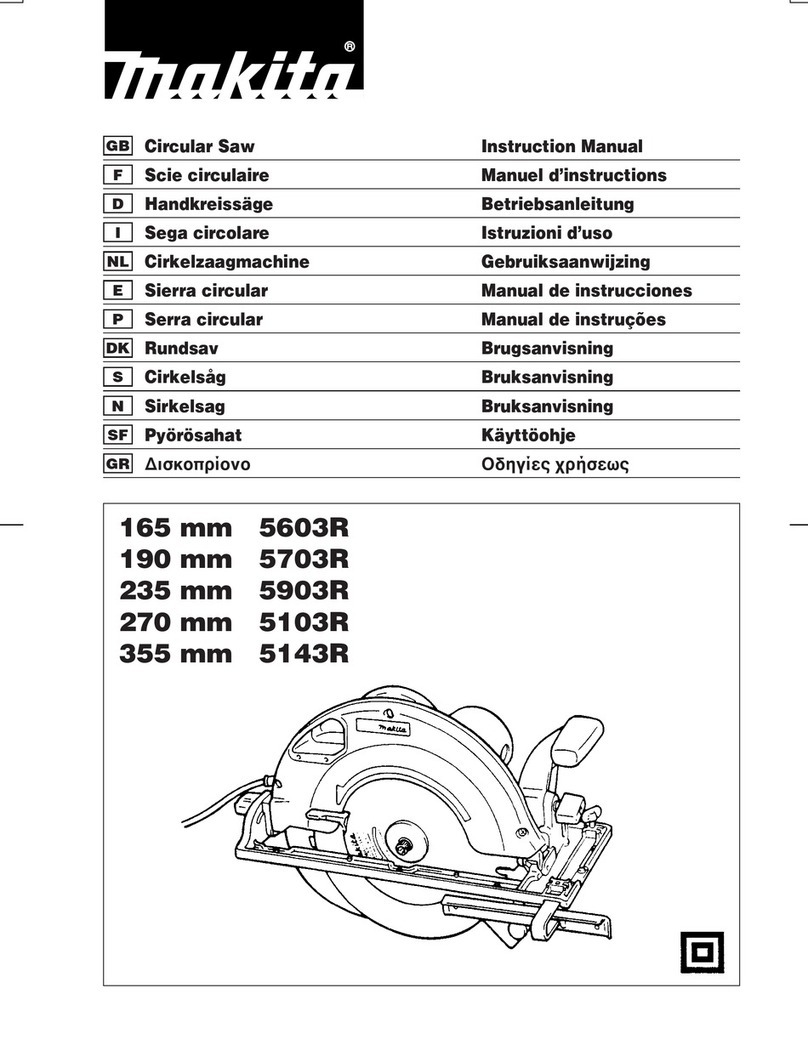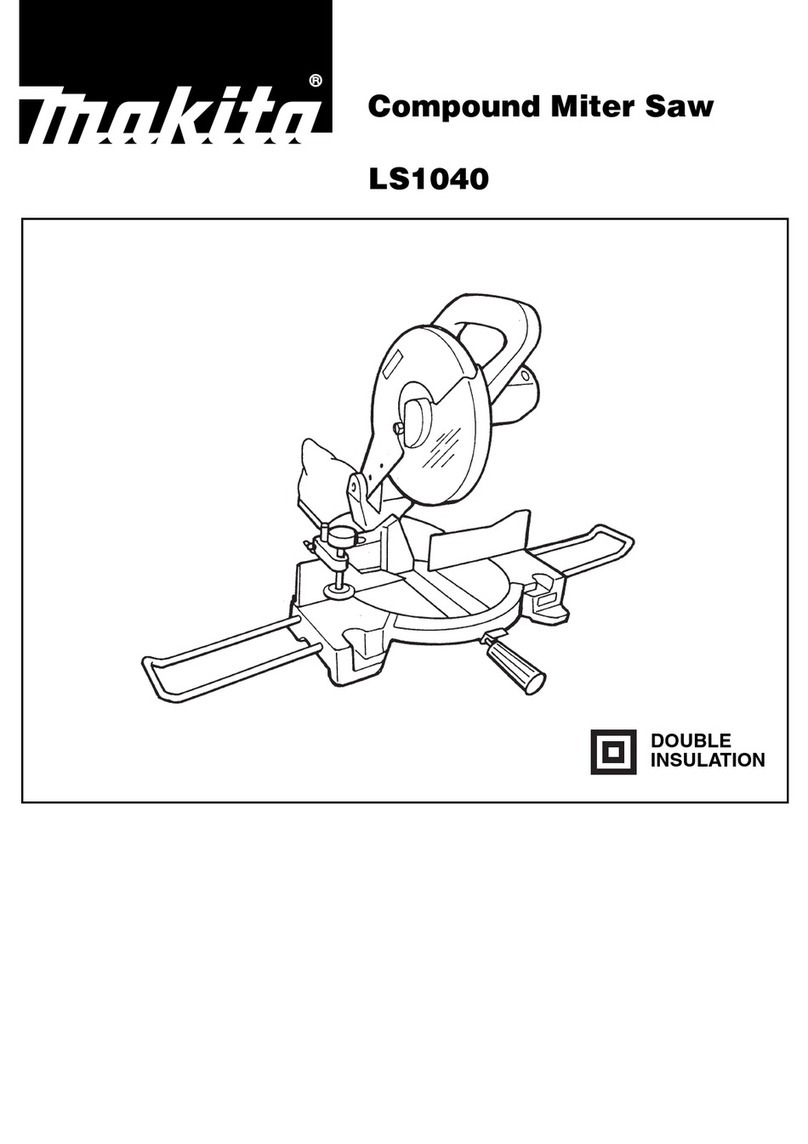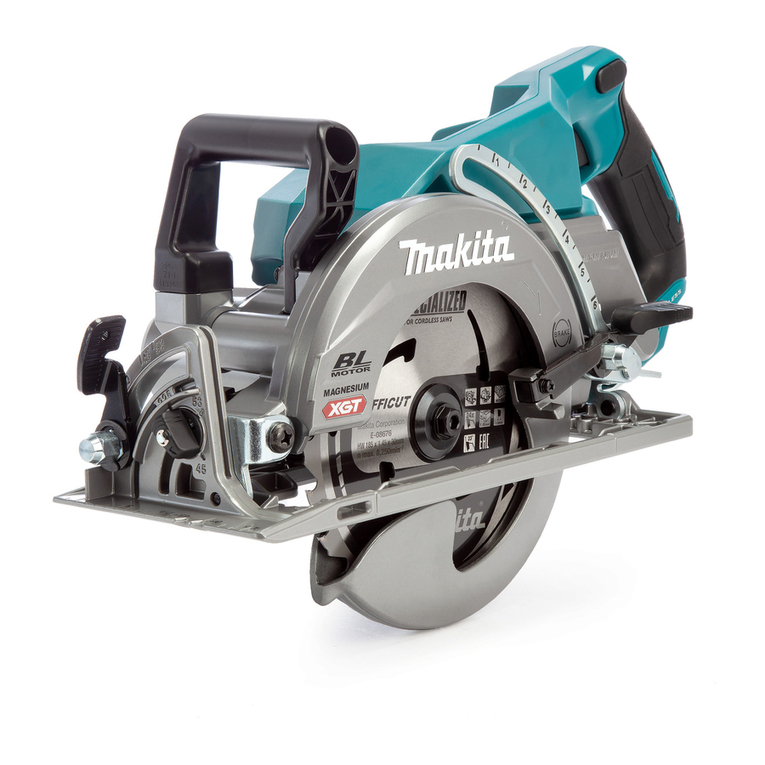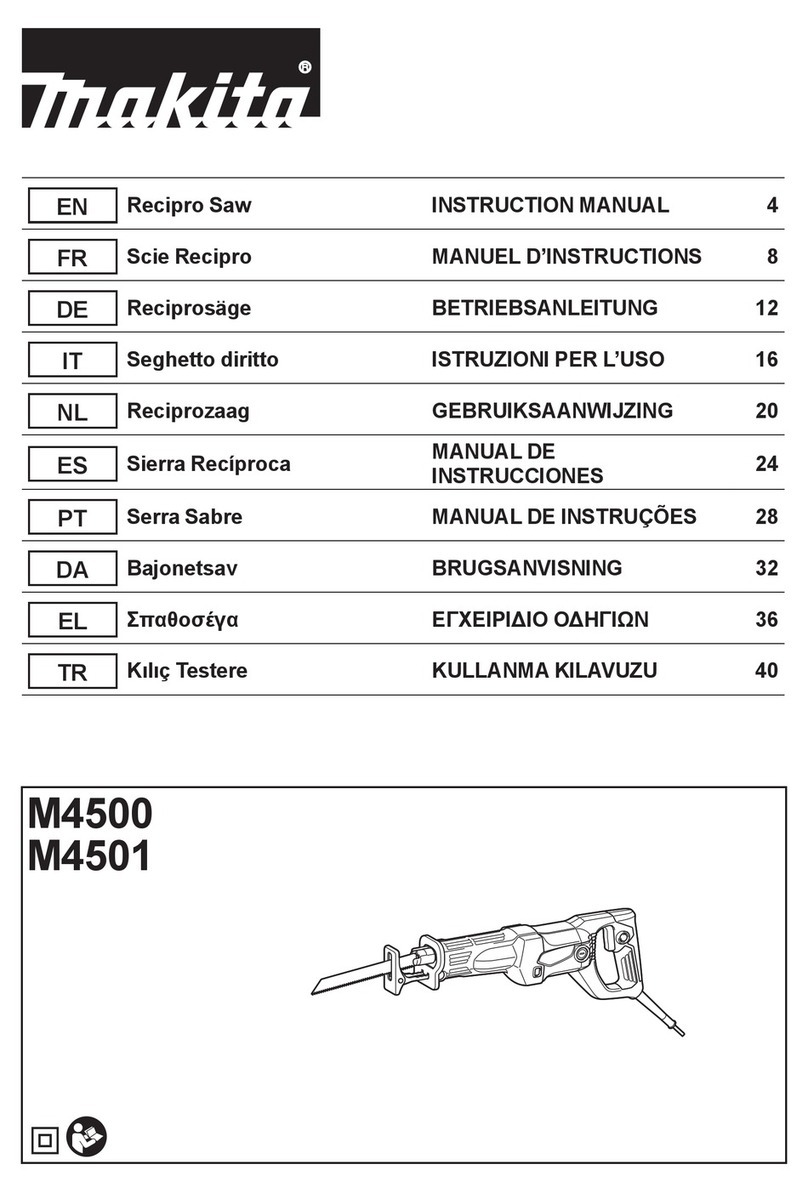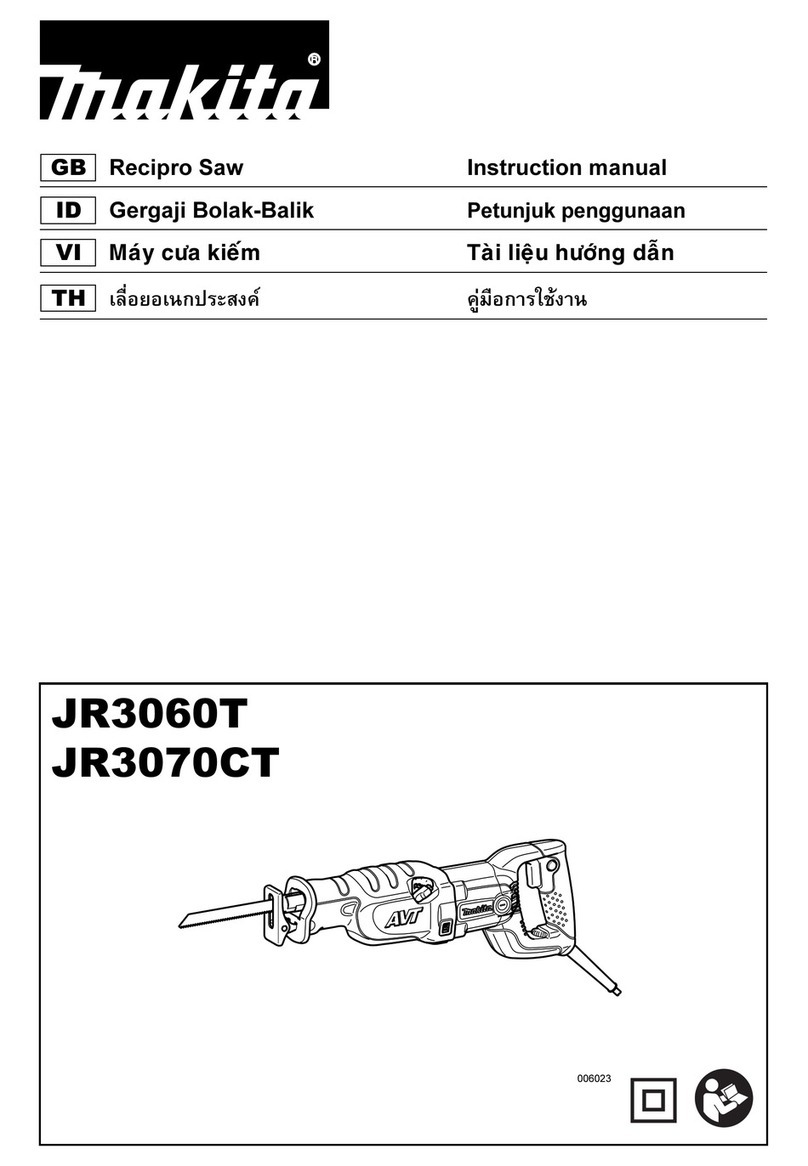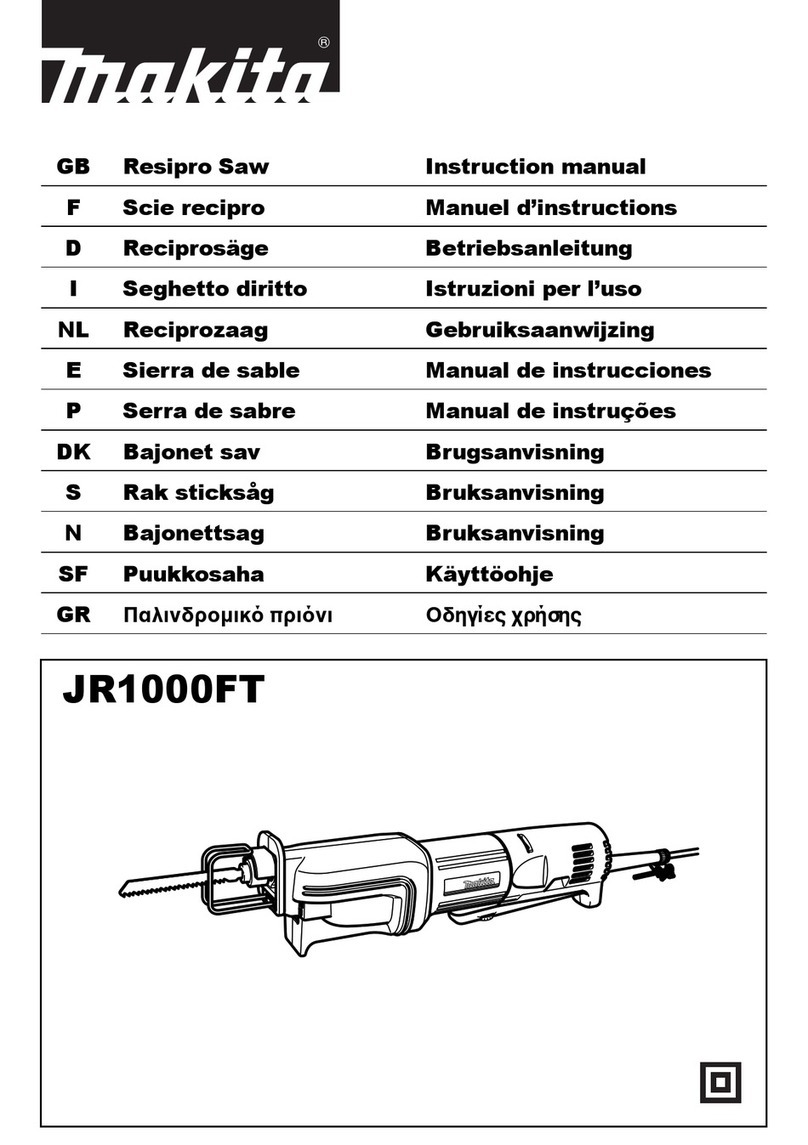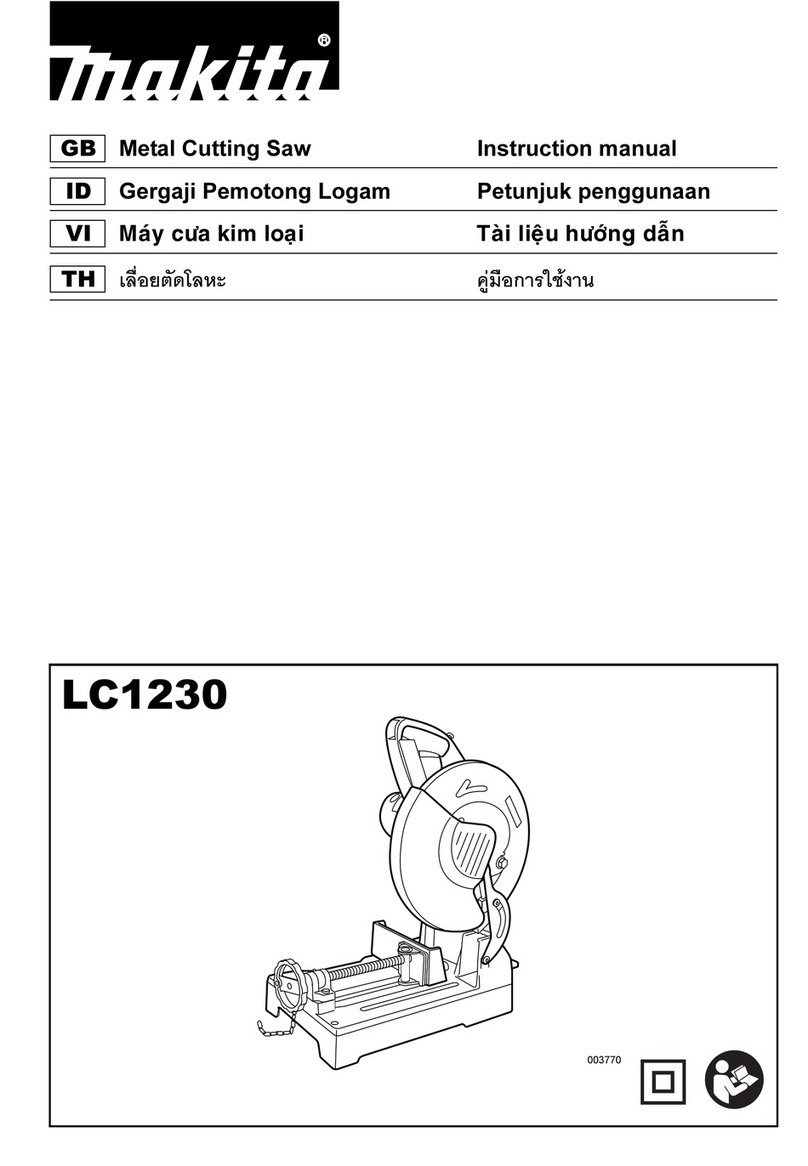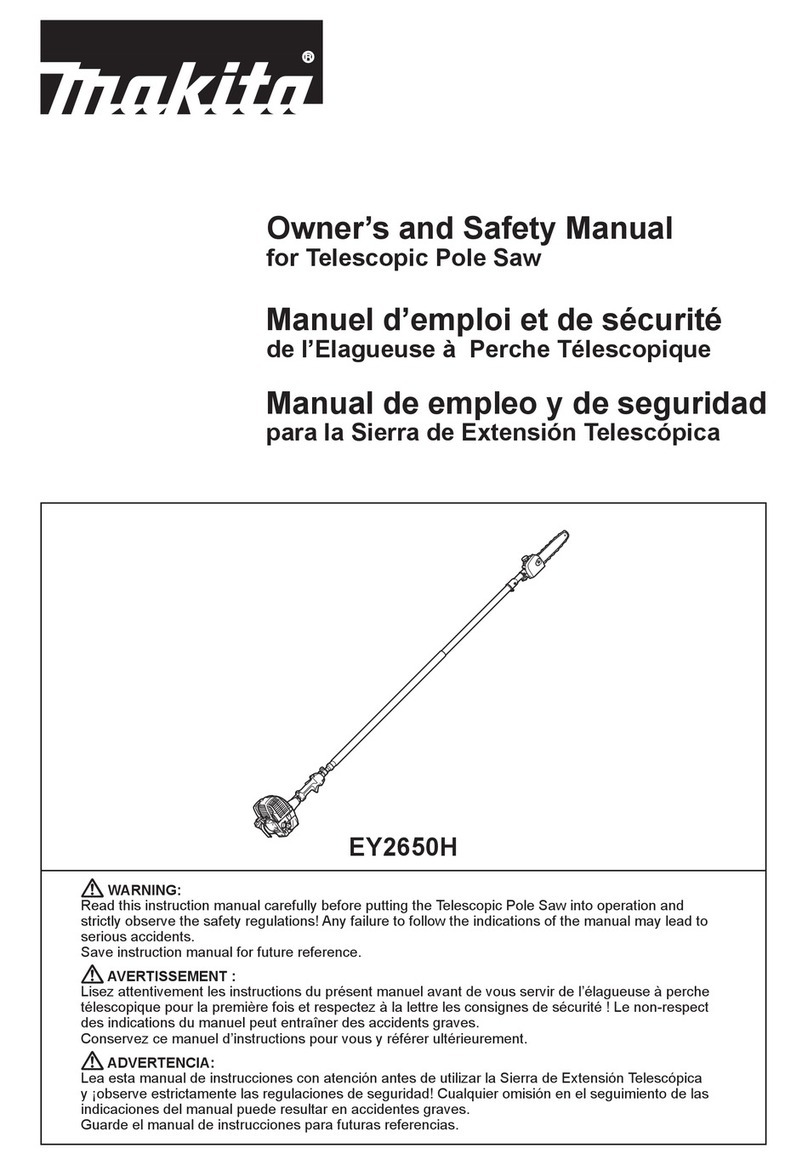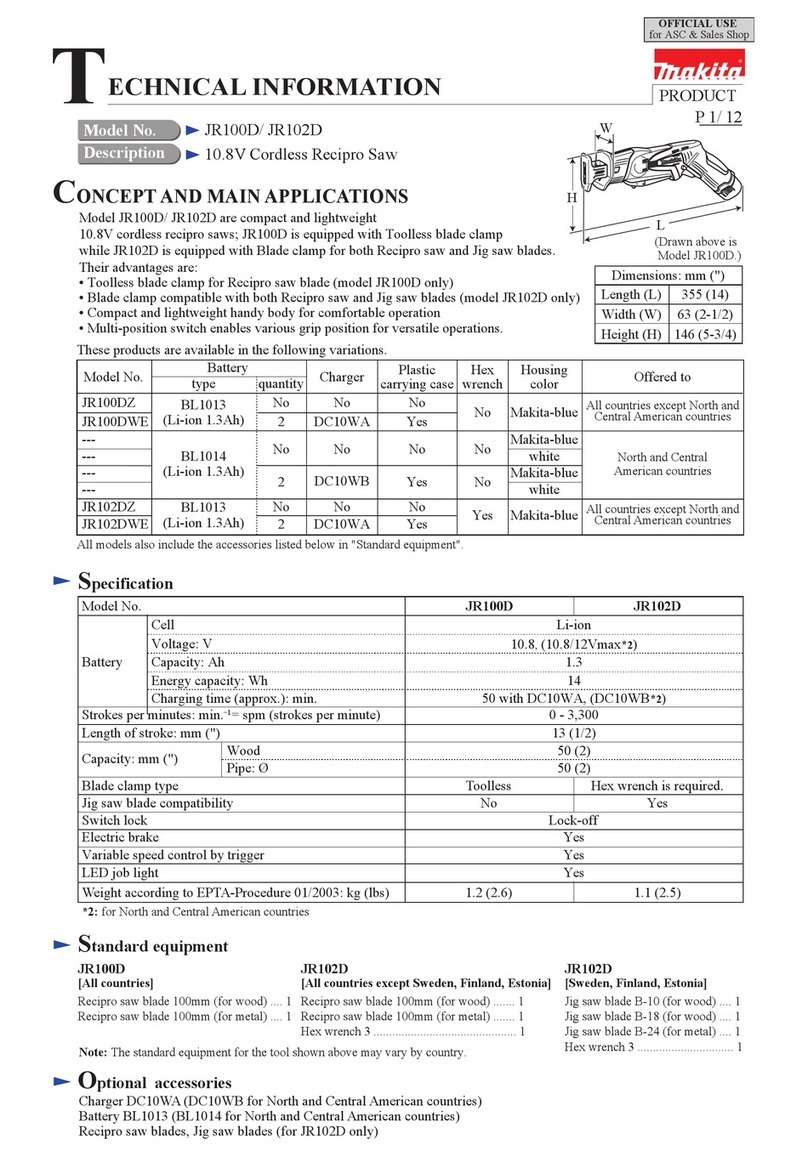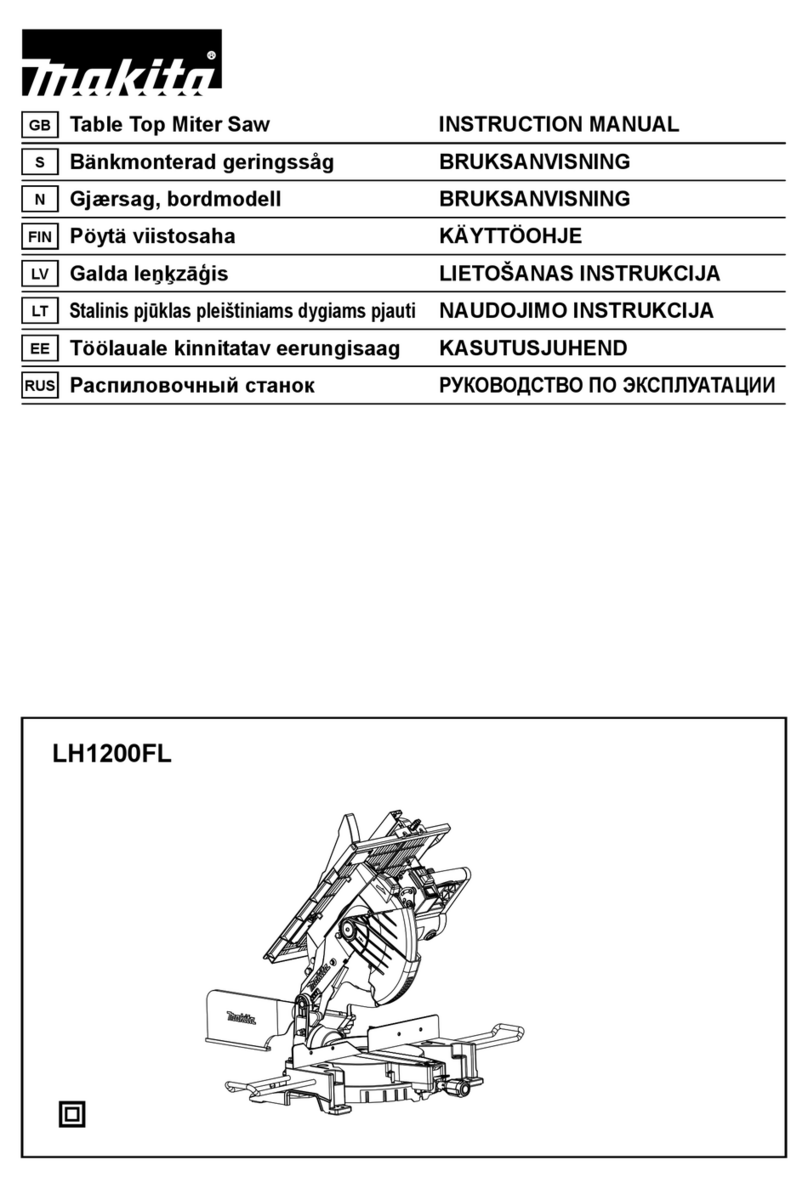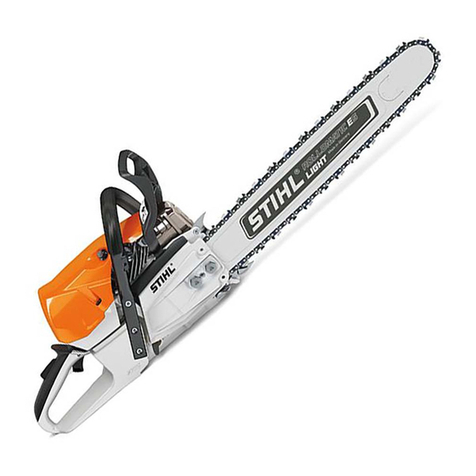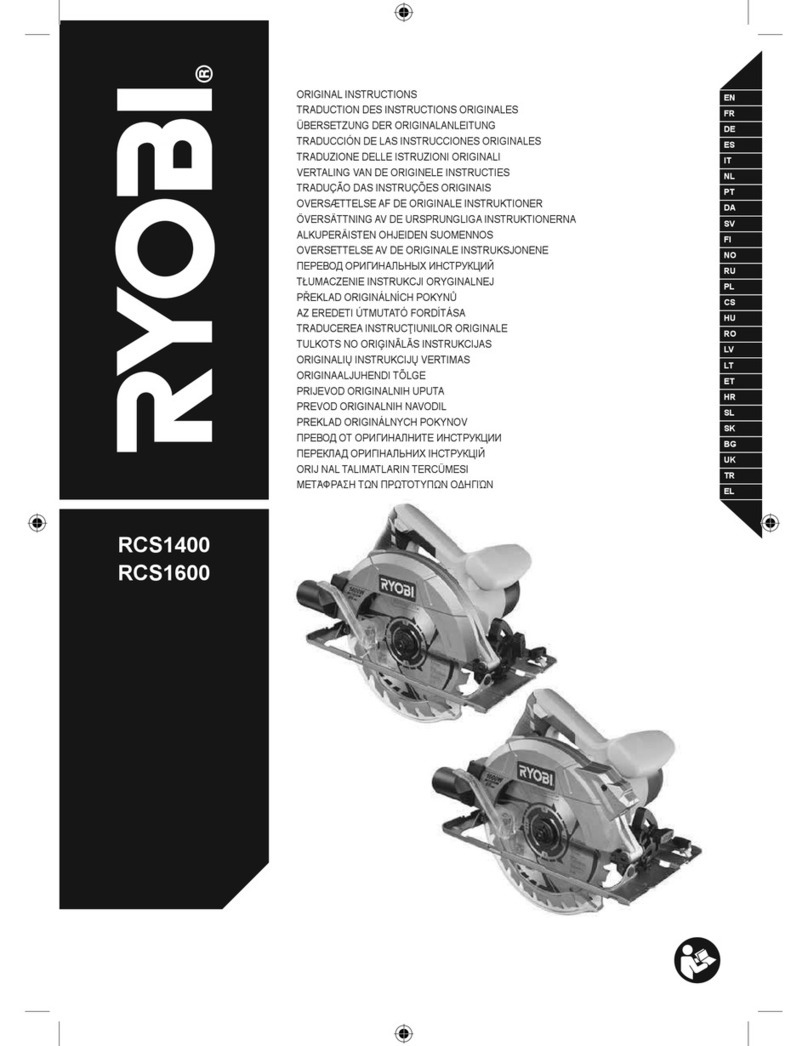
3ENGLISH
12. Secure work.
Use clamps or a vice to hold the work. It is safer
than using your hand and it frees both hands to
operate the tool.
13. Do not overreach.
Keep proper footing and balance at all times.
14. Maintain tools with care.
Keep cutting tools sharp and clean for better and
safer performance. Follow instructions for lubrica-
tion and changing accessories. Inspect tool cord
periodically and if damaged have it repaired by an
authorized service facility. Inspect extension cords
periodically and replace, if damaged. Keep han-
dles dry, clean and free from oil and grease.
15. Disconnect tools.
When not in use, before servicing and when chang-
ing accessories such as blades, bits and cutters.
16. Remove adjusting keys and wrenches.
Form the habit of checking to see that keys and
adjusting wrenches are removed from the tool
before turning it on.
17. Avoid unintentional starting.
Do not carry a plugged-in tool with a nger on the
switch. Ensure switch is off when plugging in.
18. Use outdoor extension leads.
When tool is used outdoors, use only extension
cords intended for outdoor use.
19. Stay alert.
Watch what you are doing. Use common sense.
Do not operate tool when you are tired.
20. Check damaged parts.
Before further use of the tool, a guard or other part
that is damaged should be carefully checked to
determine that it will operate properly and perform
its intended function. Check for alignment of mov-
ing parts, free running of moving parts, breakage
of parts, mounting and any other conditions that
may affect its operation. A guard or other part
that is damaged should be properly repaired or
replaced by an authorized service center unless
otherwise indicated in this instruction manual.
Have defective switches replaced by an autho-
rized service facility. Do not use the tool if the
switch does not turn it on and off.
21. Warning.
The use of any accessory or attachment, other than
those recommended in this instruction manual or the
catalog, may present a risk of personal injury.
22. Have your tool repaired by a qualied person.
This electric tool is in accordance with the relevant
safety requirements. Repairs should only be car-
ried out by qualied persons using original spare
parts, otherwise this may result in considerable
danger to the user.
ADDITIONAL SAFETY RULES FOR
TOOL
1.
Wear protective glasses. Also wear hearing
protection during extended periods of operation.
2. Use only wheels recommended by the man-
ufacturer which have a maximum operating
speed at least as high as "No Load RPM"
marked on the tool’s nameplate. Use only
berglass-reinforced cut-off wheels.
3. Check the wheel carefully for cracks or dam-
age before operation. Replace cracked or
damaged wheel immediately.
4. Secure the wheel carefully.
5. Use only anges specied for this tool.
6. Be careful not to damage the spindle, anges
(especially the installing surface) or bolt, or
the wheel itself might break.
7.
KEEP GUARDS IN PLACE and in working order.
8. Hold the handle rmly.
9. Keep hands away from rotating parts.
10. Make sure the wheel is not contacting the
work-piece before the switch is turned on.
11. Before using the tool on an actual workpiece,
let it simply run for several minutes rst.
Watch for utter or excessive vibration that
might be caused by poor installation or a
poorly balanced wheel.
12. Watch out for ying sparks when operating.
They can cause injury or ignite combustible
materials.
13. Remove material or debris from the area
that might be ignited by sparks. Be sure that
others are not in the path of the sparks. Keep
a proper, charged re extinguisher closely
available.
14. Use the cutting edge of the wheel only. Never
use side surface.
15. If the wheel stops during the operation, makes
an odd noise or begins to vibrate, switch off
the tool immediately.
16. Always switch off and wait for the wheel to
come to a complete stop before removing,
securing workpiece, working vise, changing
work position, angle or the wheel itself.
17. Do not touch the workpiece immediately after
operation; it is extremely hot and could burn
your skin.
18. Store wheels in a dry location only.
SAVE THESE INSTRUCTIONS.
INSTALLATION
Securing cut-off
1
2
► 1. Base 2. Bolt holes
